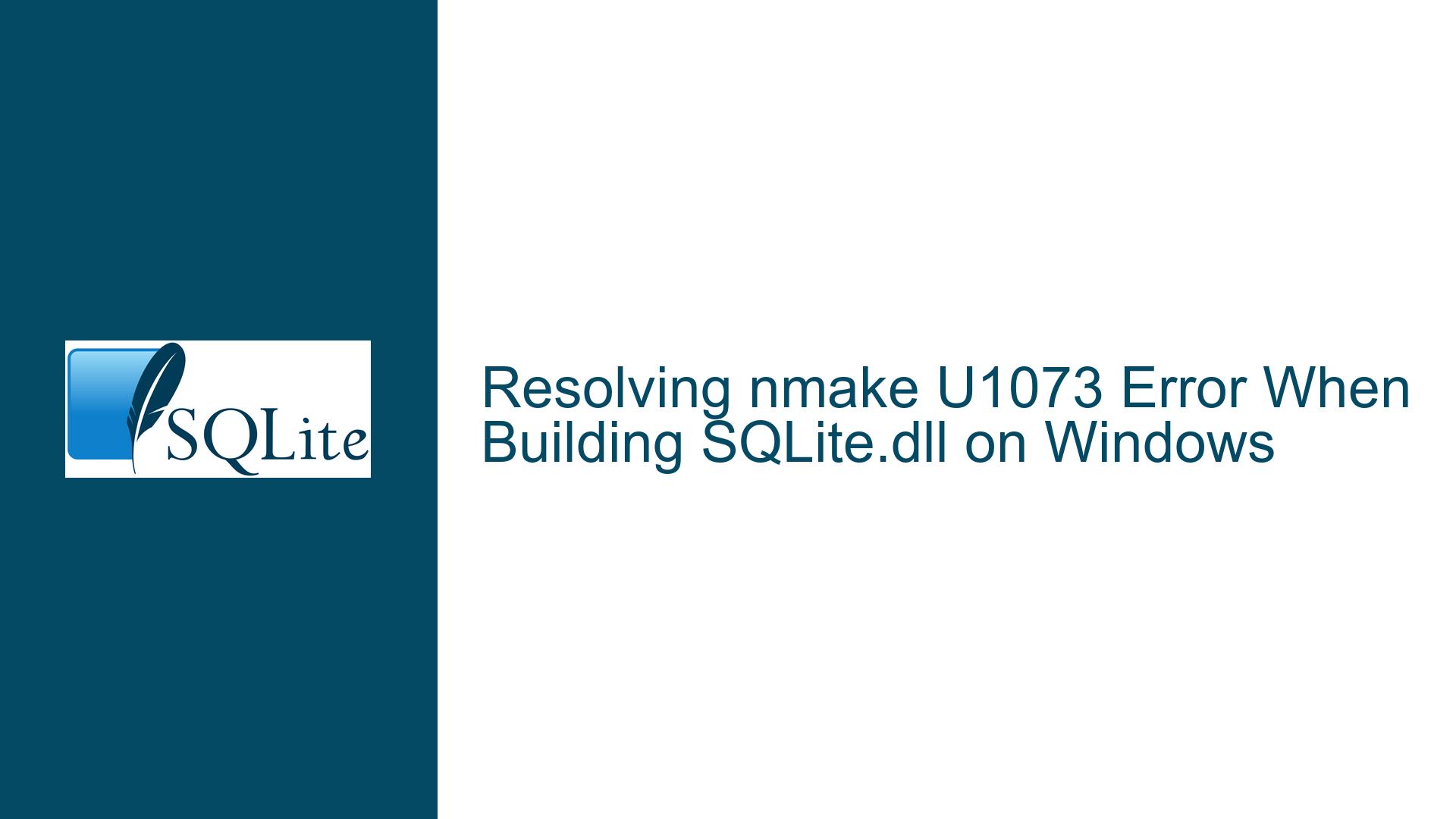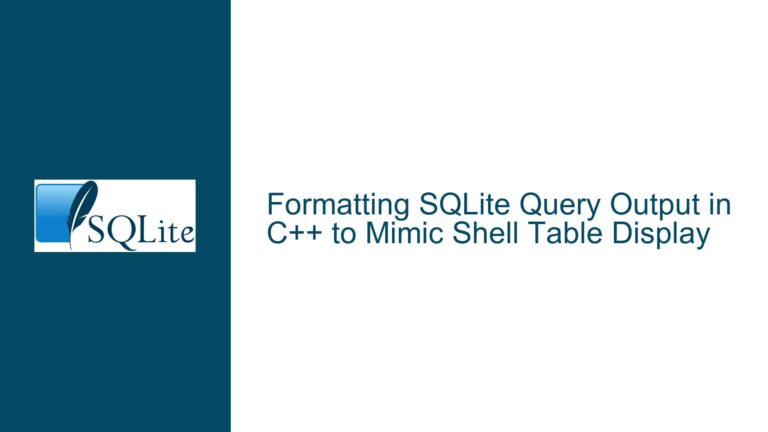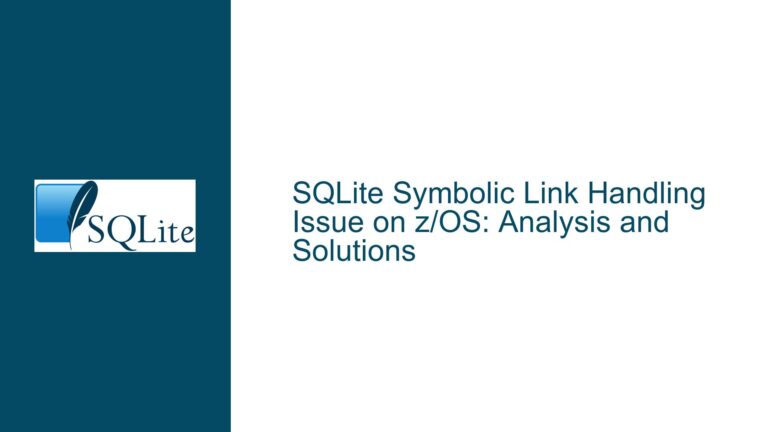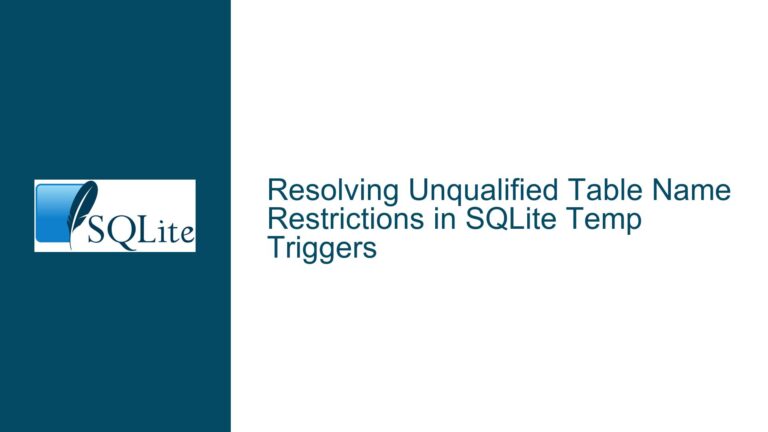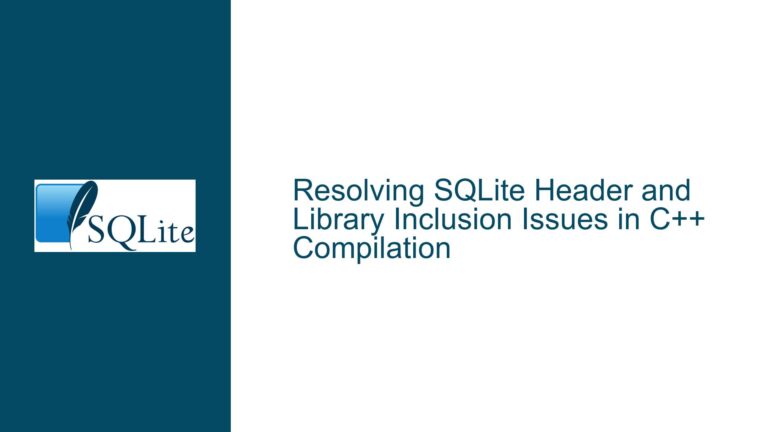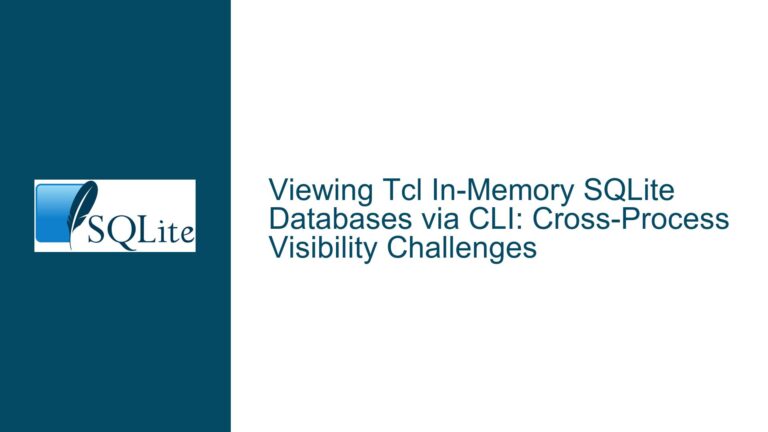Resolving nmake U1073 Error When Building SQLite.dll on Windows
Understanding the U1073 Fatal Error During SQLite DLL Compilation
The U1073 error in Microsoft’s NMAKE utility indicates a failure to create a required file during the build process. In the context of compiling SQLite as a DLL on Windows, this error specifically points to the absence of the sqlite3.rc resource file, which is critical for embedding version information, icons, and other metadata into the final DLL. The error message NMAKE : fatal error U1073: ".\sqlite3.rc" konnte nicht erstellt werden (translated: “could not be created”) suggests that the build system attempted to generate or access this file but failed.
The SQLite build process on Windows relies on a combination of a makefile.msc (Microsoft-compatible makefile) and environment-specific configurations. The sqlite3.rc file is typically auto-generated during the build using scripts or preprocessor directives. However, when using a SQLite snapshot (a pre-release or development version of SQLite), certain auto-generated files might not be included in the source archive. This omission forces the build process to generate these files dynamically, which can fail if prerequisites are unmet or if the build environment is misconfigured.
Key elements to understand:
- Resource Files in Windows DLLs: The
.rcfile is a resource script that defines non-code elements (e.g., version info, icons) compiled into the DLL. Without it, the DLL may lack critical metadata, leading to functional or compatibility issues. - NMAKE Workflow: The
makefile.mscorchestrates the compilation steps, including invoking the C compiler (cl.exe), resource compiler (rc.exe), and linker. A missing.rcfile disrupts this workflow. - Snapshot vs. Stable Releases: SQLite snapshots are development builds that may lack pre-generated files like
sqlite3.rc, unlike stable releases where such files are included.
Root Causes of Missing sqlite3.rc in SQLite Builds
1. Incomplete or Misconfigured SQLite Snapshot
SQLite snapshots are automated daily builds of the latest development code. These snapshots may exclude auto-generated files like sqlite3.rc to reduce archive size or avoid redundancy. The sqlite3.rc file is typically generated during official releases using scripts like mkversion.vbs or mkmsvc.mak, which might not execute automatically when building from a snapshot.
2. Environment Configuration Issues
The build process for SQLite on Windows requires:
- Visual Studio Build Tools: The
cl.execompiler,rc.exeresource compiler, andnmake.exemust be accessible from the command line. - Correct Developer Command Prompt: Using the x86 Native Tools Command Prompt vs. x64 can affect path resolution and toolchain behavior.
- PATH Variables: Missing or incorrect entries in the system
PATHvariable may preventnmakefrom locatingrc.exeor other utilities.
3. Makefile Dependencies and Target Sequencing
The makefile.msc includes rules to generate sqlite3.rc using VBScripts or batch files. If these rules are missing, outdated, or dependent on unfulfilled prerequisites (e.g., a missing VERSION macro), the resource file will not be created.
4. File System Permissions or Path Issues
The build process might lack write permissions in the target directory, or the path to sqlite3.rc could contain spaces, special characters, or incorrect slashes (e.g., forward vs. backward).
5. Compiler Flags and Preprocessor Definitions
The makefile.msc uses preprocessor definitions like SQLITE_VERSION to populate the resource file. If these definitions are missing or misformatted, the resource compiler may fail silently.
Generating sqlite3.rc and Fixing Build Configuration for SQLite.dll
Step 1: Validate the Build Environment
Use the Correct Developer Command Prompt:
Open the Developer Command Prompt for VS 2022 (or your VS version) from the Start menu. Verify thatcl.exe,nmake.exe, andrc.exeare in thePATHby running:where cl.exe nmake.exe rc.exeIf any are missing, repair the Visual Studio installation or select the “Desktop development with C++” workload in the Visual Studio Installer.
Extract the Snapshot Properly:
Use a tool that preserves directory structures and file permissions. Avoid extracting to system-protected directories (e.g.,Program Files).
Step 2: Manually Generate sqlite3.rc
The sqlite3.rc file can be created using SQLite’s versioning scripts:
Locate
mkversion.vbs:
This script is included in stable releases but might be absent in snapshots. If missing, download it from the SQLite source repository:curl -o mkversion.vbs https://www.sqlite.org/src/raw/tool/mkversion.vbsExecute the Script:
Run the script using the Windows Script Host (cscript):cscript //nologo mkversion.vbs 3.43.0 > sqlite3.rcReplace
3.43.0with the version in yoursqlite3.hfile.Integrate with the Makefile:
Modifymakefile.mscto skip auto-generation and use the pre-createdsqlite3.rc:# Comment out or remove lines that generate sqlite3.rc # !IF 